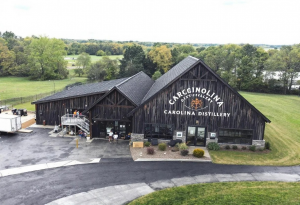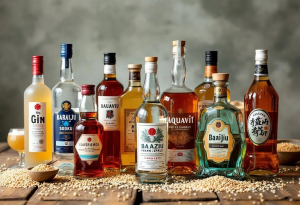Craft distilling is booming! It’s gone from a niche hobby to a serious player in the spirits world. But what is it, really? It’s more than just making booze in small batches. It’s about a deep commitment to quality, a love for unique flavors, and a dedication to the art of spirit making.
I’m a distiller with Kentucky roots. I’ve worked in everything from huge operations to tiny artisanal distilleries. I’ve seen what it takes to make truly exceptional spirits. And I’m going to share that with you.
Think of this as your guide to craft distilling. We’ll cover the key principles, the techniques, and the artistry. Whether you’re an enthusiast, an aspiring distiller, or just curious, you’ll find something here.
What Defines Craft Distilling?
Okay, let’s get one thing straight: “craft” is a slippery word. There’s no single legal definition. It’s easy to misuse. But at its heart, craft distilling is about these things:
- Small-Scale Production: “Small” is relative, sure. But craft distilleries make way less than the big guys. This means more control over every single step.
- Quality Ingredients: Craft distillers sweat the details. They use top-notch ingredients, often local. Good ingredients = great flavor. Simple as that.
- Hands-On Approach: Forget robots! Craft distilling is about getting your hands dirty. The distiller is involved in everything, from start to finish.
- Unique Character: No boring spirits here! Craft distilleries aim for distinct, memorable flavors. They experiment with grains, yeasts, and aging. It’s all about that special something.
- Transparency: Honesty is the best policy. Many craft distilleries share their secrets. They tell you about their processes, ingredients, and beliefs. What you see is what you get.
The Foundation: Fermentation
Before you can distill, you gotta ferment. This is where yeast turns sugar into alcohol. It’s crucial for flavor. Here’s the lowdown:
- Grain Selection: Corn, rye, wheat, barley… the choice is yours! Each grain brings something different to the party. Bourbon loves corn for sweetness. Rye whiskey brings the spice.
- Milling and Mashing: Grind the grains, then mix them with hot water. This extracts the sugars, creating a sugary liquid called wort.
- Yeast Selection: Yeast isn’t just yeast. Different strains create different flavors. Fruity? Earthy? Spicy? It’s all in the yeast. Experiment!
- Fermentation Process: Cool the wort, add the yeast, and let the magic happen. Fermentation takes days. The yeast eats the sugar, creating alcohol and flavor.

The Heart of the Process: Distillation
Distillation is where you separate the alcohol from the fermented mash. This is where the distiller earns their stripes. Two main types of stills here:
- Pot Stills: Copper beauties! Used for batch distillation. They create spirits with character. The shape and size of the still matters.
- Column Stills: For continuous distillation. They make a more neutral spirit. Efficient, but often less flavorful.
Heat the mash, the alcohol turns to vapor. Cool the vapor, it turns back into liquid. Stronger liquid. Distillers make “cuts” – separating the good stuff from the bad. “Heads” are nasty. “Hearts” are what you want. “Tails” are heavy and less desirable. Making those cuts perfectly? That’s the art.
The Magic of Aging
Oak barrels. For many spirits, they’re essential. They add flavor and complexity. The type of oak, the char level, the aging time… it all matters.
- Barrel Selection: American oak? French oak? They taste different! American oak gives vanilla and caramel. French oak gives spice and tannin.
- Char Level: The inside of the barrel is burned. The more it’s charred, the more smoky and caramel flavors you get.
- Aging Time: The longer it ages, the more flavor it gets from the wood. But too long? Bitter. Also, climate matters! Warmer climates speed things up.
The spirit interacts with the wood. It pulls out flavors and colors. It also oxidizes, which changes its character. Aging is a delicate dance. You gotta watch it, taste it, and make sure it reaches its full potential.
Ingredient Sourcing: The Foundation of Flavor
Ingredients, ingredients, ingredients! They matter. Craft distillers often use local grains, fruits, and botanicals. This helps local farmers. It also means better quality and freshness. Some distilleries even grow their own stuff or forage for wild ingredients. Talk about dedication!
Water is key too. It’s used in mashing and proofing. The minerals in the water affect the flavor. So many distilleries use filtered or spring water. It makes a difference.
Craft Regulations and Licensing
Regulations are a pain, but they’re a necessary pain. They vary by country and region. You’ll need licenses, you’ll need to pay taxes, and you’ll need to follow labeling rules. Know the rules, play by the rules, and you’ll be fine.
Tasting and Appreciation
The whole point of craft distilling? To make spirits that taste amazing. Tasting isn’t just drinking. It’s about understanding the story, appreciating the craftsmanship, and savoring the flavors.
- Appearance: Look at the color and clarity.
- Aroma: Swirl it around, then take a deep sniff. What do you smell? Fruit? Flowers? Spice? Wood?
- Taste: Take a small sip and let it sit on your tongue. Sweet? Sour? Bitter? Savory?
- Finish: What flavors linger after you swallow? Long and complex? Short and simple?
Learn about craft distilling, and you’ll appreciate spirits even more. Whether you’re a pro or a newbie, there’s always something new to discover.
FAQ: Craft Distilling Edition
- What’s the difference between craft and commercial distilling? Craft is small-scale, quality-focused, hands-on, and unique. Commercial is large-scale and efficient.
- What are the most common types of craft spirits? Whiskey, gin, vodka, rum, and brandy are all popular.
- How can I start my own craft distillery? Lots of planning, money, and permits. Get a business plan, find funding, and get the right licenses.
- Where can I learn more about craft distilling? Books, workshops, online courses… The American Craft Spirits Association (ACSA) is a great resource.
Craft distilling is always changing. New distilleries are popping up. New techniques are being developed. It’s an exciting time to be involved, whether you’re a distiller, a drinker, or just curious!


